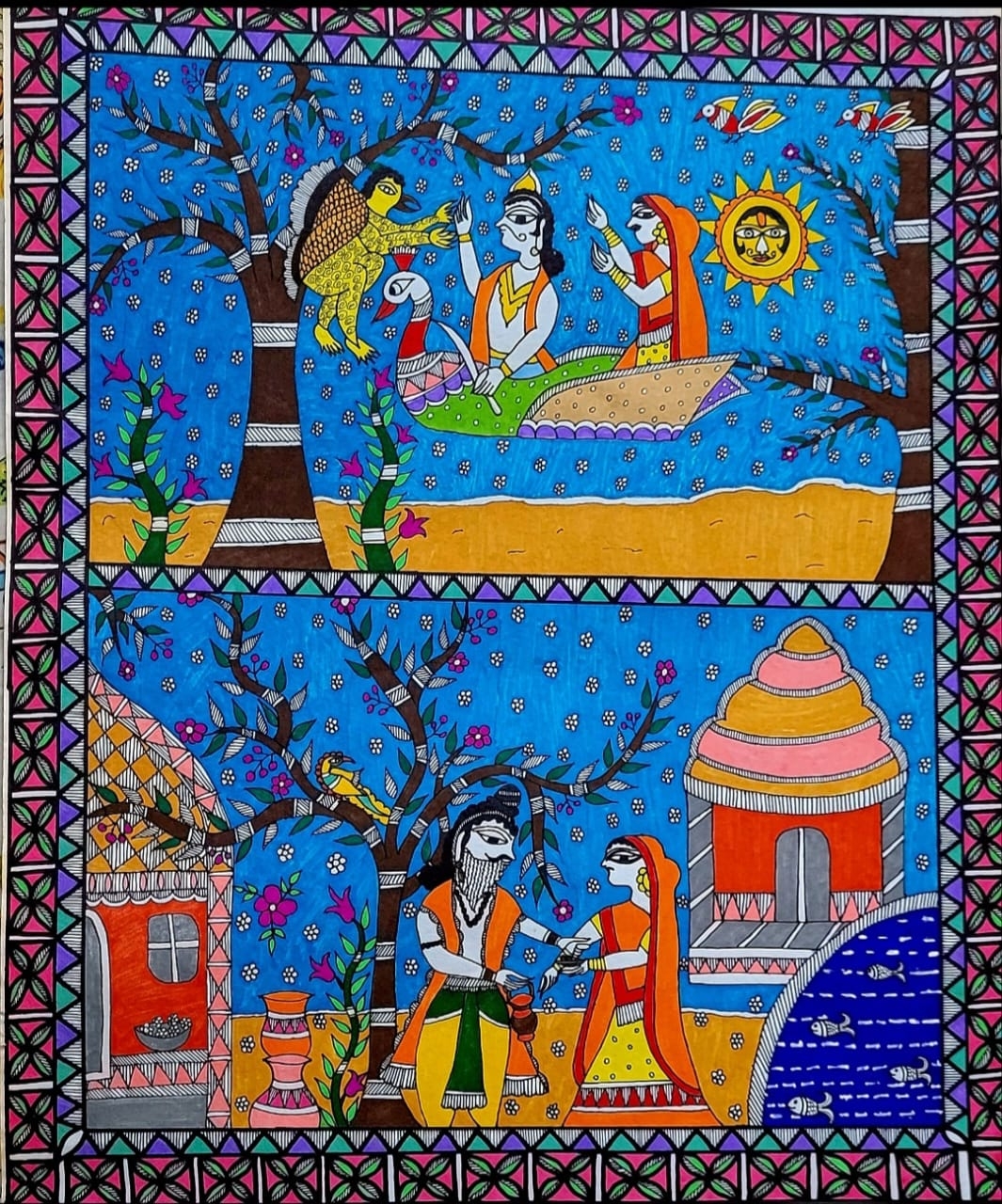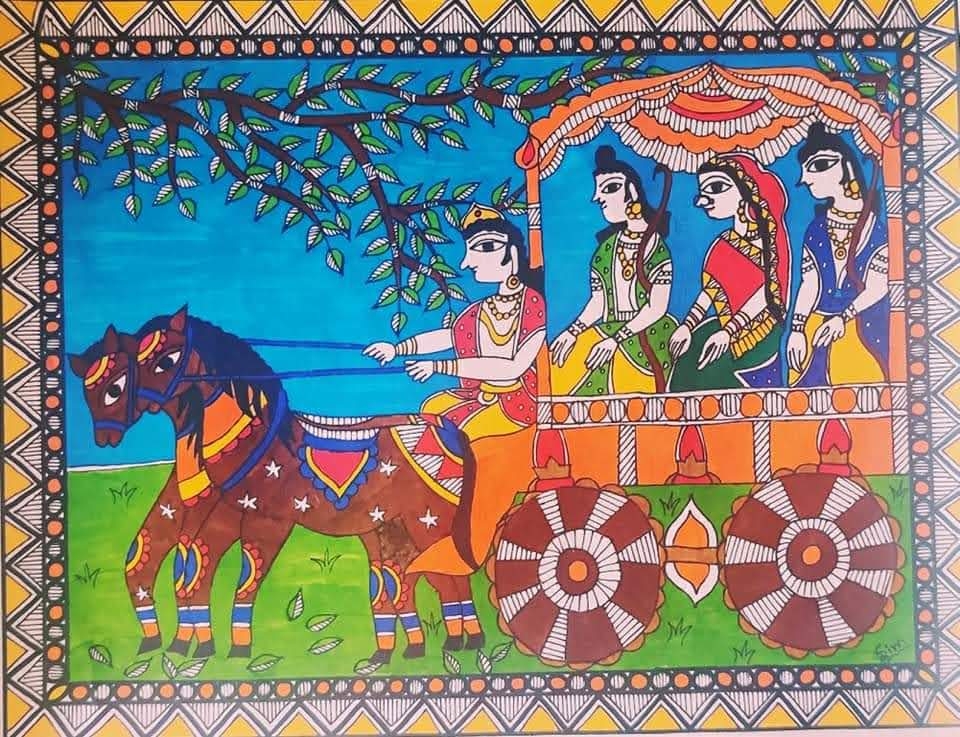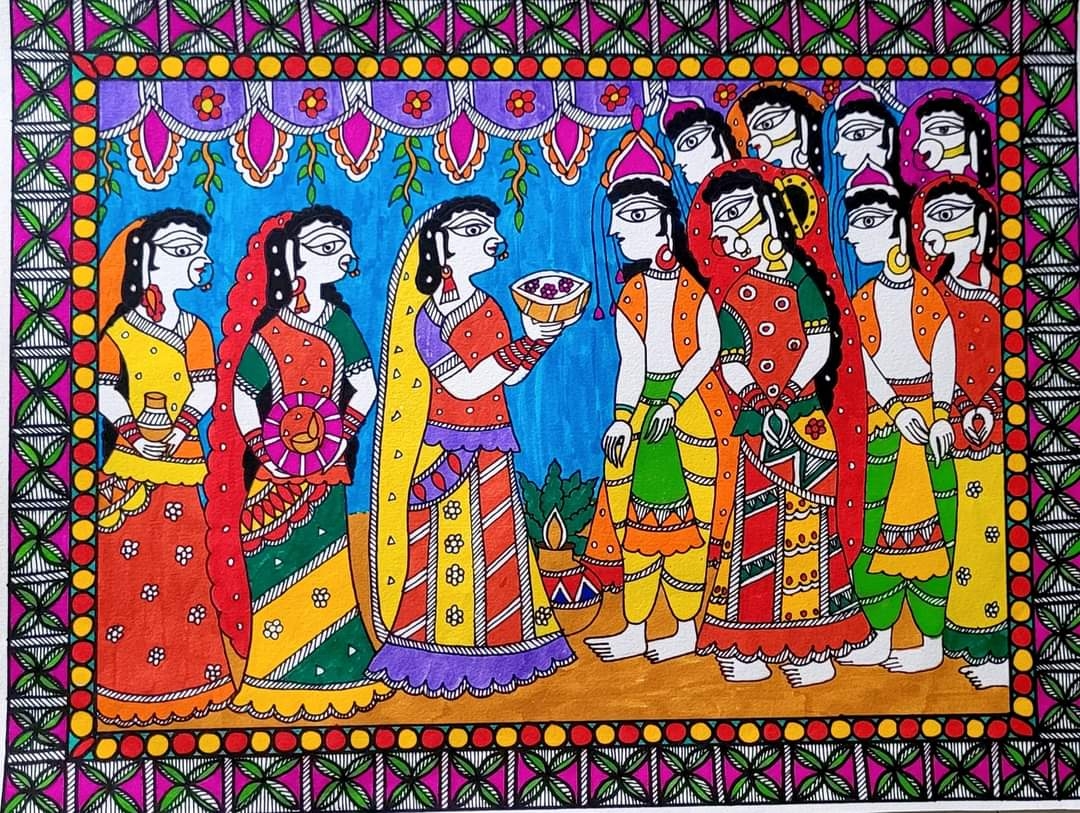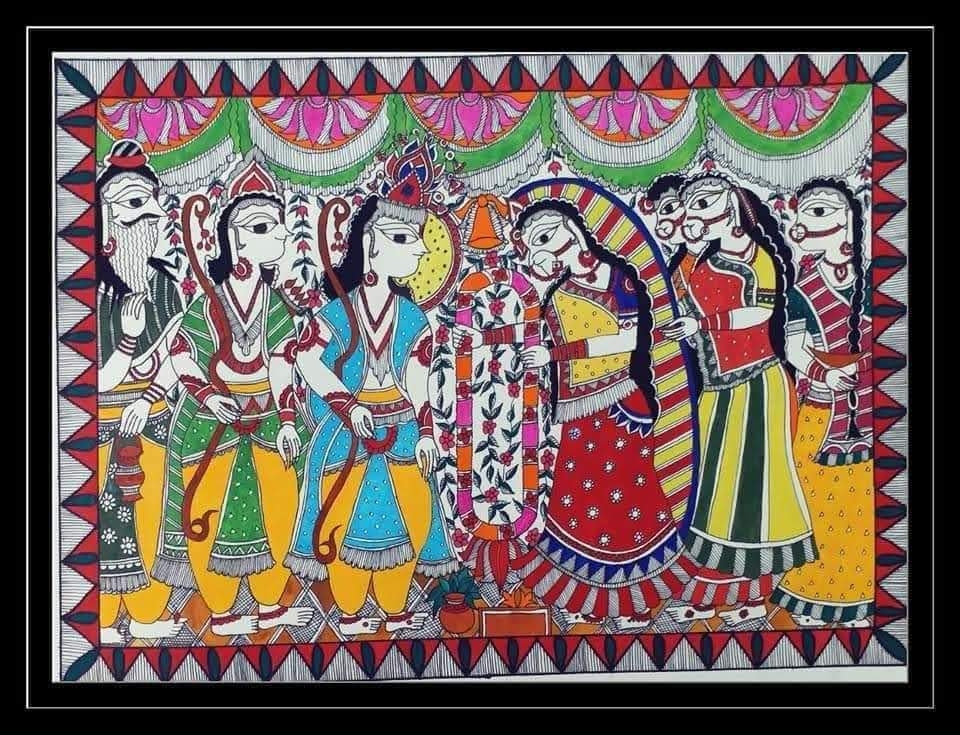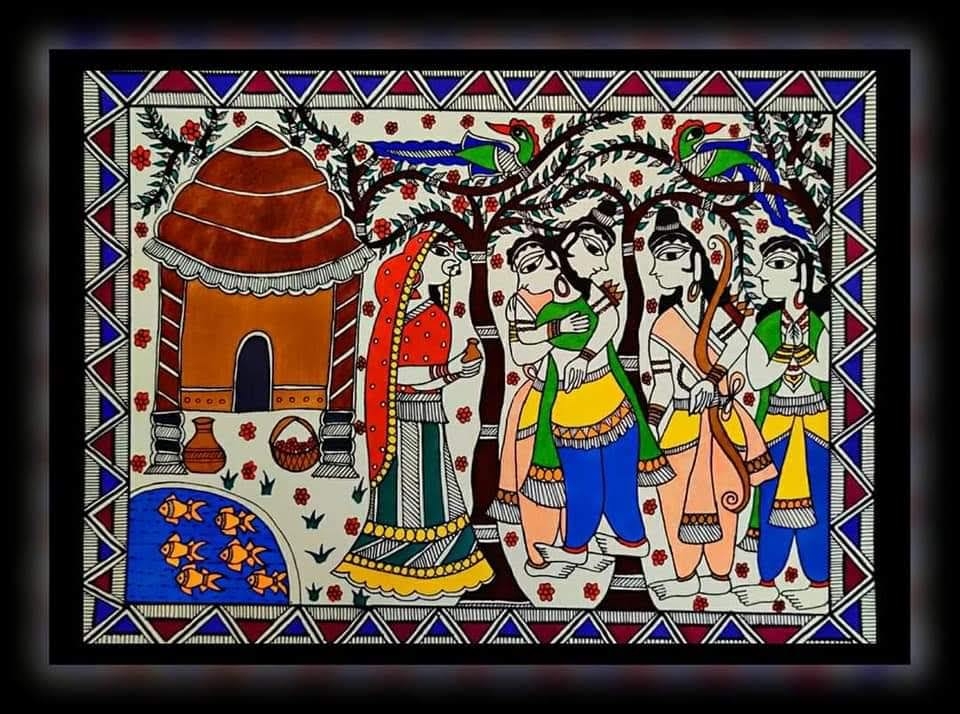
Smrity Bhawana
My passion for the art started since childhood. Since 15 years I am deeply connected to Madhubani
Painting. Thanks to all my friends and relatives who always keeps me motivated by liking and
commenting on each artwork posts. After doing so many madhubani paintings and reading about it I
have collected few information about this beautiful art. Below is my article on Madhubani Painting.
A Journey Through Honey Forest
Madhubani or Mithila painting is a folk painting of northern India. Madhubani literally means, Honey
from the Forest.
Madhubani Painting originated 2500 years ago near Mithila region of Bihar at the time of the
Ramayana, when king Janak asked various artists to do paintings at the time of marriage of his daughter
Sita and lord Ram.
Madhubani Painting was discovered by William G. Archer. These forms of painting were unknown to
the outside world until discovered by the British colonial William G. Archer. While inspecting the
damage after the massive Bihar earthquake of 1934, Archer was amazed by the beautiful illustrations on
the newly exposed interior walls of homes.
Originally Madhubani Painting is done with fingers, twigs, brushes, nib pens and matchsticks.
Madhubani artists are known to utilize the processed organic colours made from Charcoal, turmeric,
flowers, rice powder, cow dung, leaves, plants, sandalwood and indigo.
My passion for the art started since childhood. Since 15 years I am deeply connected to Madhubani
Painting. Thanks to all my friends and relatives who always keeps me motivated by liking and
commenting on each artwork posts. After doing so many madhubani paintings and reading about it I
have collected few information about this beautiful art. Below is my article on Madhubani Painting.
A Journey Through Honey Forest
Madhubani or Mithila painting is a folk painting of northern India. Madhubani literally means, Honey
from the Forest.
Madhubani Painting originated 2500 years ago near Mithila region of Bihar at the time of the
Ramayana, when king Janak asked various artists to do paintings at the time of marriage of his daughter
Sita and lord Ram.
Madhubani Painting was discovered by William G. Archer. These forms of painting were unknown to
the outside world until discovered by the British colonial William G. Archer. While inspecting the
damage after the massive Bihar earthquake of 1934, Archer was amazed by the beautiful illustrations on
the newly exposed interior walls of homes.
Originally Madhubani Painting is done with fingers, twigs, brushes, nib pens and matchsticks.
Madhubani artists are known to utilize the processed organic colours made from Charcoal, turmeric,
flowers, rice powder, cow dung, leaves, plants, sandalwood and indigo.

